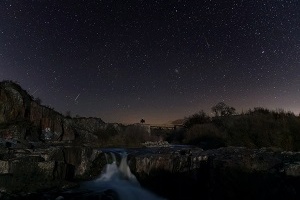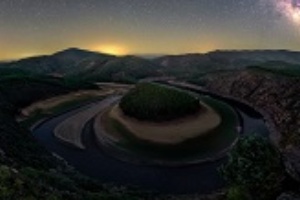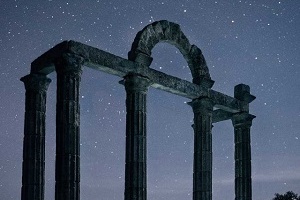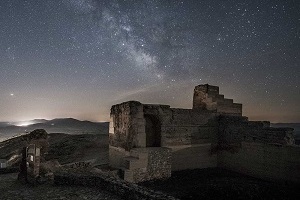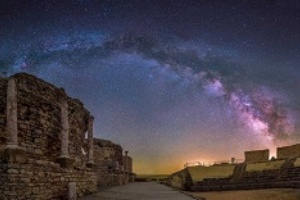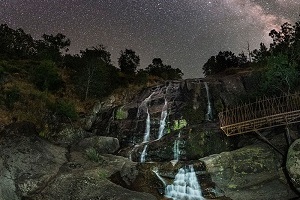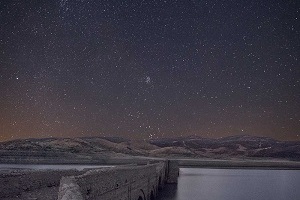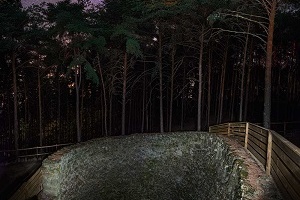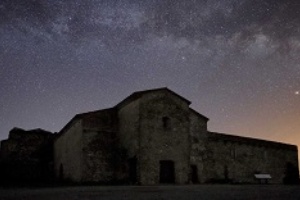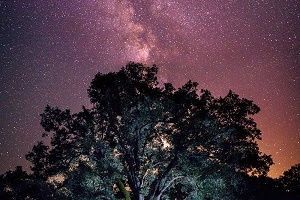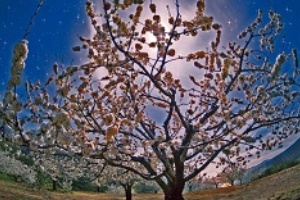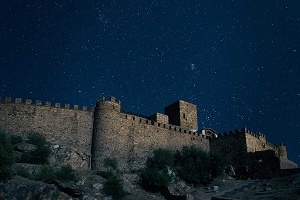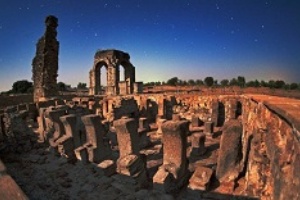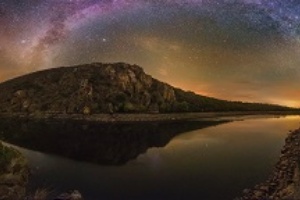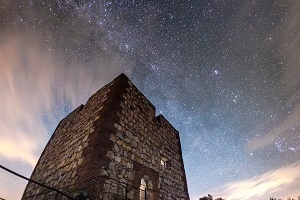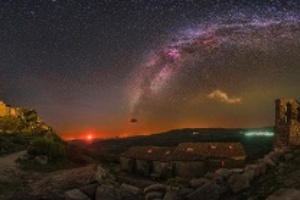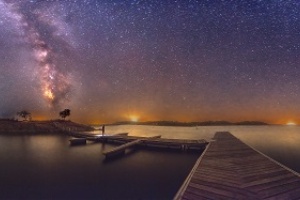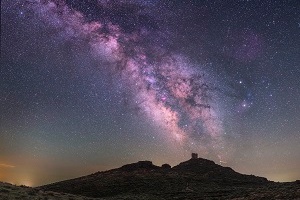Nature areas
Astrotourism
The region is a real landscape of stars. Apart from its natural attractions, we have excellent conditions to get the best sky-viewing experience and a specialised sector. Monfragüe, Alqueva, Las Hurdes and Villuercas-Ibores-Jara Geopark have been granted a Starlight Tourist Destination certificate.
Astrotourism
The region is a real landscape of stars. Apart from its natural attractions, we have excellent conditions to get the best sky-viewing experience and a specialised sector. Monfragüe, Alqueva, Las Hurdes and Villuercas-Ibores-Jara Geopark have been granted a Starlight Tourist Destination certificate.
The low level of light pollution in a great part of Extremadura, the good climate, with many cloudless days all year round, the existence of spectacular locations and the increasing involvement of public institutions, lodgings and businesses promoting astrotourism make the region a paradise for stargazers.
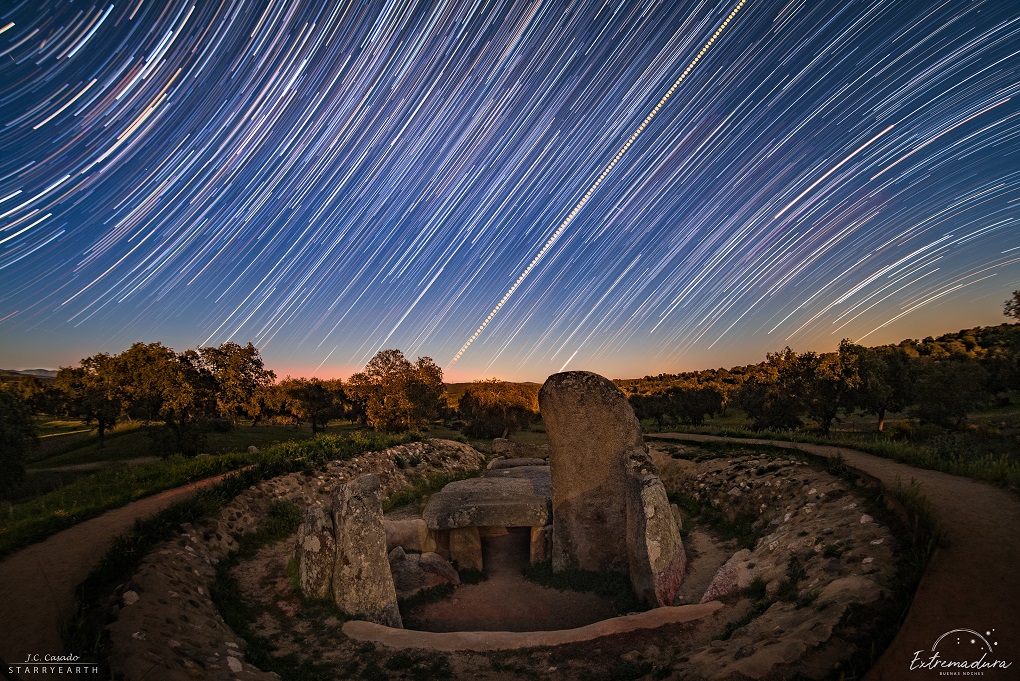
*Dolmen of Lácara. Picture selected by NASA on March 21, 2019 (https://apod.nasa.gov/apod/ap190321.html).
Throughout the whole Autonomous Community it is easy to find a place offering optimum stargazing conditions. In this sense, the guide 'Extremadura, paisaje de estrellas' (Extremadura, landscape of stars), published by the Directorate General of Tourism, proposes these ten areas for observing the night sky: Sierra de Gata; Tajo International Biosphere Reserve and Sierra de San Pedro; Tierras de Granadilla; Castro Capote (Higuera la Real); Monfragüe Biosphere Reserve; castles and dehesas of Sierra Suroeste in Badajoz; Villuercas Ibores Jara Geopark; Alqueva Natural Theme Park; Valle del Jerte; and Valle del Ambroz.
Guide 'Extremadura, landscape of stars'
This guide provides information on accesses, GPS coordinates, what can be seen in the sky and sightseeing recommendations around the area.
Extremadura has two territories that have been granted the Starlight Destination certificate, awarded by the foundation of the same name: the Monfragüe Biosphere Reserve and the Gran Lago de Alqueva area.
These sites may be visited and offer excellent stargazing conditions as they are well-protected from light pollution, being especially suitable for developing tourist activities based on this natural resource.
Monfragüe
Monfragüe was, in early 2017, the first place in Extremadura to receive this recognition. Places like El Salto del Gitano (also known as Peña Falcón) or Monfragüe castle are magnificent viewpoints for observing, during the day, griffon vultures, black vultures and Egyptian vultures, and, at night, the Milky Way from the Sagittarius constellation, on the left (south-southwest), to the Perseus constellation, on the right (northeast).
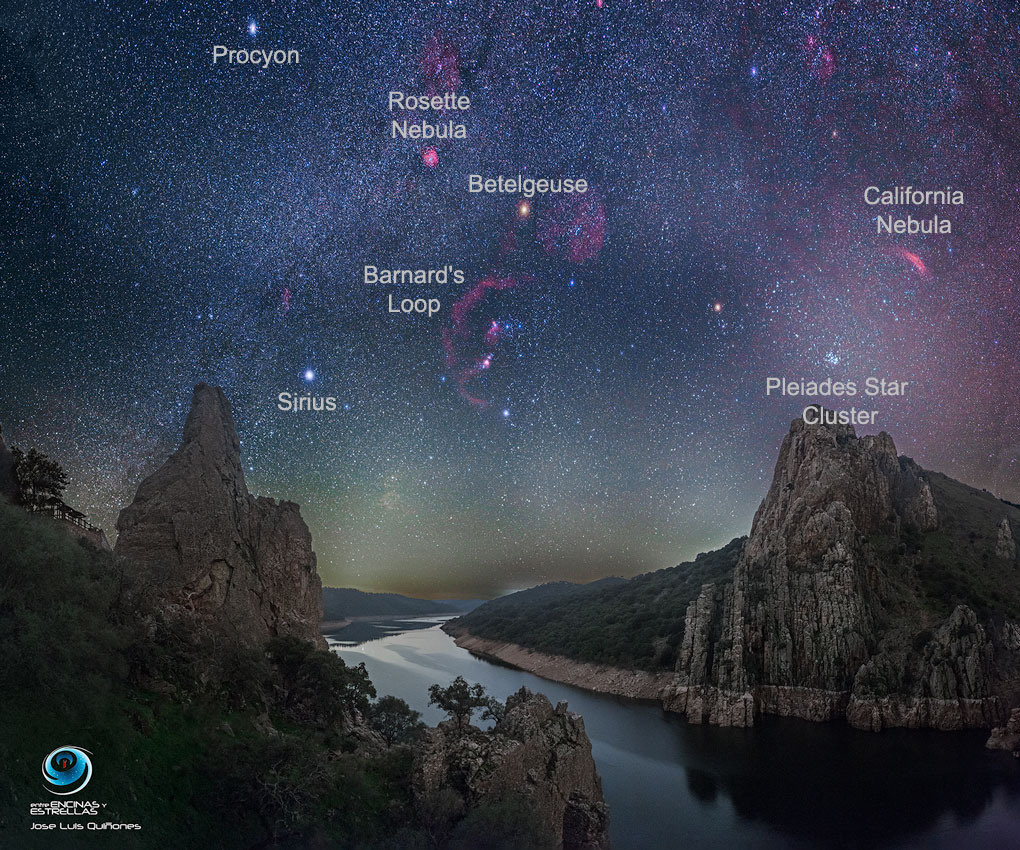
*Monfragüe National Park. Picture selected by NASA on March 14, 2017 (https://apod.nasa.gov/apod/ap170314.html).
The municipality of Torrejón el Rubio, also in the Monfragüe Biosphere Reserve, has an astronomical observatory that has recently been renovated featuring a 4-metre dome, with a capacity for 10 people, and a 25-cm Meade telescope. It is advisable to contact the Tourist Office in the town for opening and visiting times (+34 927 455 292, +34 637 30 11 89 or turismotorrejonelrubio@gmail.com and astromonfrague@gmail.com).
Another site in Monfragüe, very near the village of Villarreal de San Carlos (Serradilla), there is an astronomical viewpoint at a place called Arroyo Malvecino with information panels about the Milky Way, the moon phases and circumpolar constellations.
Without leaving the Biosphere Reserve, in Casas de Miravete, there is an astronomical observatory at Era de los Santos. It has several information panels about the solar system, the moon, celestial objects and the mythology of the constellations, in addition to a nocturnal or nocturlabe (an instrument used to determine the local time based on the position of a given star in the night sky) and a constellarium, which allows you to locate more than 50 constellations visible throughout the year in the northern hemisphere. Although this observatory is permanently open (it is located on a livestock farm, so please close the gates), it is possible to take a guided tour by booking at GeoCentro Monfragüe (+34 927 54 25 30 or through geocentromonfrague@gmail.com).
Alqueva
In southwest Extremadura, five cross-border towns in the Gran Lago del Alqueva area (Olivenza, Cheles, Alconchel, Táliga and Villanueva del Fresno) received the region’s second Starlight Destination certificate in April 2018.
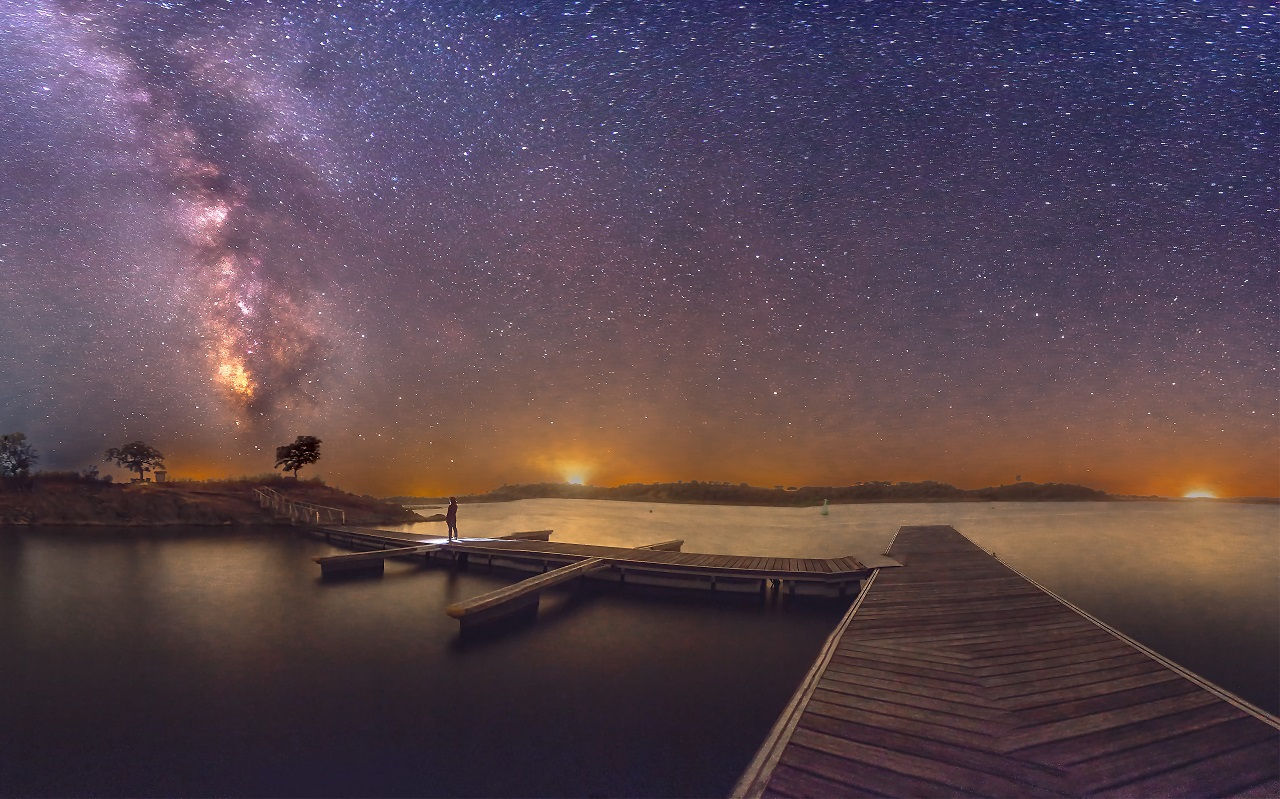
The jetties at Villanueva del Freno and Cheles, as well as Alconchel castle, are some of the many great spots for stargazing in this territory dominated by the largest artificial lake in western Europe located on the Portuguese-Spanish border.
So these five Extremaduran towns are now included in the certification already granted a few years ago to various Portuguese municipalities under the name ‘Alqueva Starlight Tourist Destination'.
Subsequently, in March 2019, the southwest mountain range of Badajoz received the Starlight certification, and, since then, they are part of Alqueva destiny. These villages are Fregenal de la Sierra, Higuera de Vargas, Higuera la Real, Jerez de los Caballeros, Oliva de la Frontera, Valencia del Mombuey, Valle de Matamoros and Zahínos. Valverde de Leganés joined in 2025.
Las Hurdes
Las Hurdes has long been a region of rugged beauty, but since December 2021, it's also officially a Starlight Tourist Destination. This certification highlights Las Hurdes' exceptional conditions for stargazing, making it a must-visit for any aspiring astronomer or lover of the night sky.
This territory comprises six distinct municipalities—Caminomorisco, Casar de Palomero, Casares de las Hurdes, Ladrillar, Nuñomoral and Pinofranqueado—each offering its own unique charm. What they all share, however, is a natural paradise abundant with prime viewpoints and locations perfect for stargazing.
One of the most spectacular spots, and a true highlight, is the Meander of El Melero near Caminomorisco. This breathtaking natural bend in the river not only offers incredible vistas but also marks the boundary between the provinces of Cáceres and Salamanca. Imagine watching the Milky Way stretch across the sky from such a dramatic backdrop!
Just like the rest of Extremadura, Las Hurdes is seeing a growing commitment to astrotourism. More and more accommodations, tour operators, and local organizations are actively promoting this unique form of tourism, offering a variety of experiences designed to connect visitors with the wonders of the cosmos.
Geopark
Villuercas-Ibores-Jara Geopark has officially been certified as a Starlight Destination as of July 2025. This protected area, encompassing 19 municipalities, is home to approximately 50 geosites (locations of significant scientific, educational and tourist interest).
The Geopark is a hub of activity focused on regional development, with a particular emphasis on ecotourism and astrotourism. The latter has gained significant momentum, thanks to the region's exceptional natural conditions and the dedicated involvement of local organizations and businesses. These groups organize a variety of stargazing experiences, including guided routes, observation sessions, and astronomical workshops.
Prime locations within the Geopark for experiencing the breathtaking night sky include Risco de la Villuerca (also known as Pico Villuercas), standing at an impressive 1,600 meters above sea level, and Cabañas del Castillo, among others. These spots offer unparalleled opportunities to witness the wonders of the starry heavens.
Starlight Sites: El Chorrerón and Los Calicantos
In addition to the Starlight destinations, in Extremadura you can visit two locations that have been endorsed as Starlight Sites: El Chorrerón, in Moraleja (since 2022), and Los Calicantos beach, in Casas de Don Pedro (since 2025).
El Chorrerón is located just a few kilometers from the town of Moraleja (Cáceres). This 5-hectare enclave is part of a common 'dehesa', where the Árrago River flows and forms an attractive waterfall.
Los Calicantos is a beach located in the Zújar reservoir, in La Siberia (Badajoz). It is a good place for stargazing and also for a swim, as it boasts a Blue Flag for the quality of its water and services.
Continuing our journey through Extremadura, Trujillo has a planetarium usually installed in the historic 16th-century building called Conventual de San Francisco. It is the largest mobile planetarium in Spain, with a diameter of 12 metres and a capacity of up to 50 people per session. The activities offered by this joint project of the Town of Trujillo and the Centre of Advanced Technologies (CETA-CIEMAT) go beyond the mere projection of films, their ultimate goal being the dissemination of scientific culture (information on visiting and opening times at https://planetario.ceta-ciemat.es).
In the region there are increasingly more offers of accommodation, activities companies and tourism professionals that provide stargazing-related services, ranging from guided tours and courses to themed dinners, camps for children or telescope rental and lodgings, among other options.
‘Extremadura, paisaje de estrellas’ (Extremadura, landscape of stars) publishes the contacts of the following companies: Ad Astra (Hervás), Entre Encinas y Estrellas (Fregenal de la Sierra), Aossa Extremadura (Cáceres), Cielos de Extremadura (Cáceres), Apartamentos Rurales La Cañada (Torrejón el Rubio), Grupo Alcor Extremadura (Alange), NatRural Explorers del Geoparque - Astroturismo Villuercas (Guadalupe), Adalberti Extremadura (Trujillo) y Birding Hotel Las Canteras (Trujillo). There is also an accommodation called Los Bujíos Astronómicos (Ceclavín).
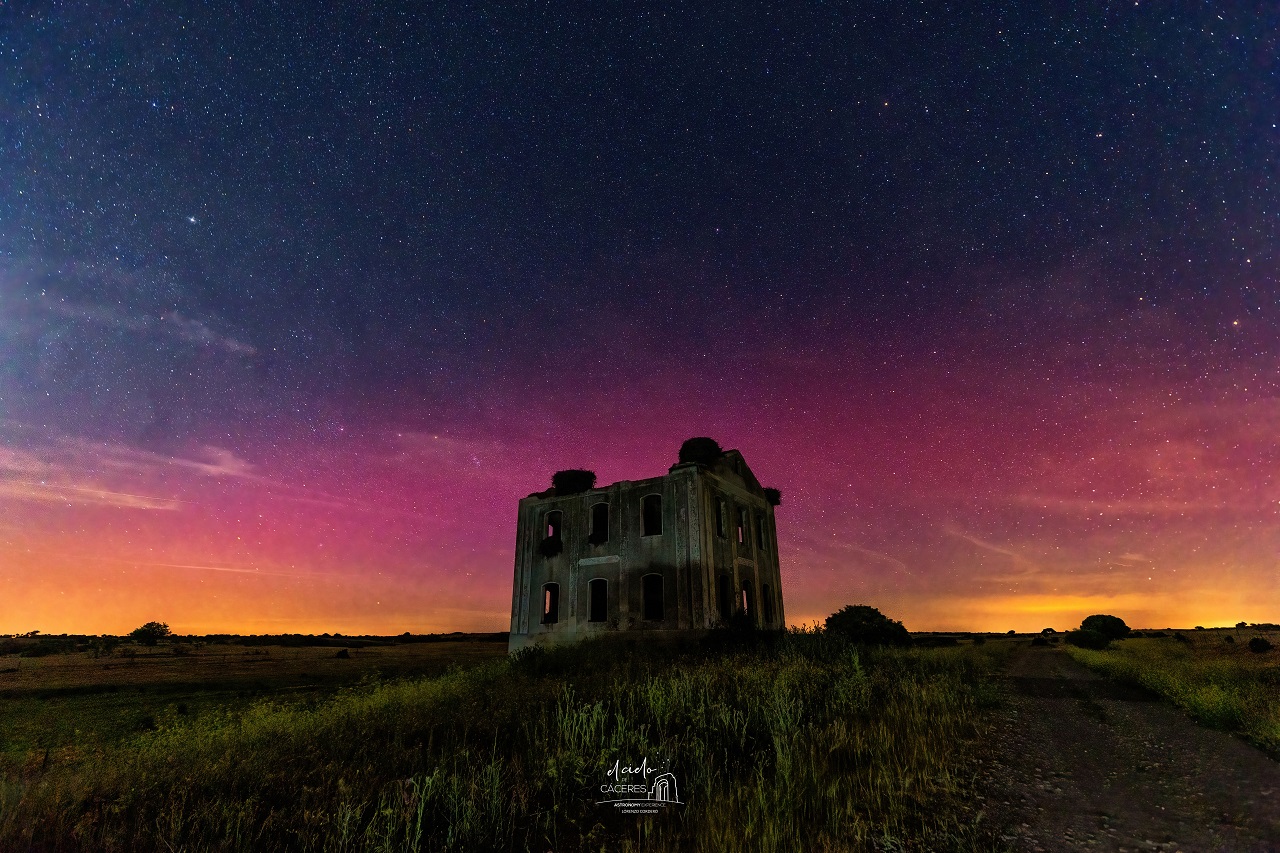
*Northern Lights in Casar de Cáceres. Picture selected by NASA on April 25, 2023 (https://apod.nasa.gov/apod/ap230425.html).
Hospederías de Extremadura have installed high sensitivity cameras at their establishments in Monfragüe Park (Torrejón el Rubio), Conventual Sierra de Gata (San Martín de Trevejo), Valle del Ambroz (Hervás) and Valle del Jerte(Jerte), that provide streaming of the night sky, sunrises and sunsets. At the same time, this accommodation network has taken steps to reduce light pollution.
More information: https://extremadurabuenasnoches.com/.
Apps to learn and enjoy the astronomy: https://extremadurabuenasnoches.com/multimedia/apps/.
Gallery:
More suggestions
-
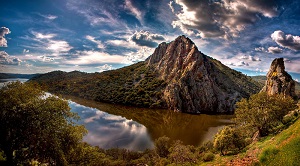
Monfragüe National Park
The Monfragüe National Park is a wonderful place to visit for both ornithology and Mediterranean flora.
-
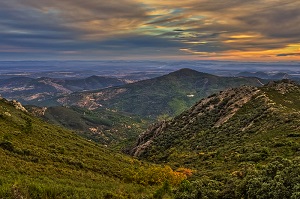
Extremadura's Geopark
The Villuercas-Ibores-Jara Geopark is not to be missed, with its spectacular landscapes, rich biodiversity and paleontological remains.
-
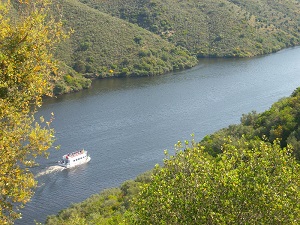
Tagus International Nature Reserve
The Tagus International Nature Reserve is one of the last refuges for various threatened species native to Mediterranean woodlands. Pure flora and fauna biodiversity.
-
Castrejón de Capote
There are many exceptional sites left by the Celts in Extremadura, and Castrejón de Capote is one of them. Here you can find remains of walls, buildings and even a shrine.
-
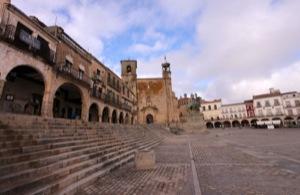
Trujillo, birthplace of discoverers
Already important in the Roman Empire, the Discovery of America brought it universal fame and greatness.
-
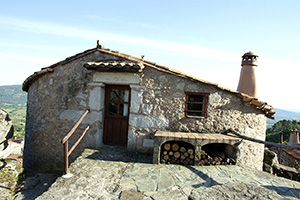
Alagón Valley, Gata and Hurdes
These regions are dotted with natural pools of crystal-clear waters that beckon one to swim in them on summer days.
-
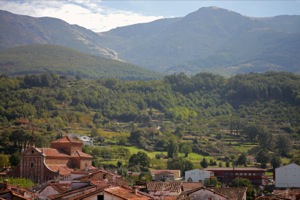
Ambroz Valley and Tierras de Granadilla
Cultural heritage, natural beauty spots and ornithology come together in these two regions of the province of Cáceres.
-
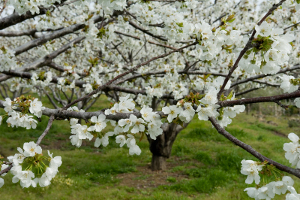
Jerte Valley and La Vera
One of the lushest areas in the region, whose beauty peaks in springtime. A pleasure in all senses.
-

Alqueva, Sierra Suroeste and Tentudía
If you travel to the south of the province of Badajoz, you can discover incomparable beauty spots steeped in history, legend and nature.

